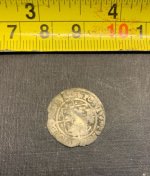ConceptualizedNetherlandr
Bronze Member
Still, no one has figured out what these are with 12 holes ranging in 12 sizes. Many have been found. My guess is, if we put our minds together we can figure it out! Or hurt our skulls trying 
 www.archaeology.org
www.archaeology.org





